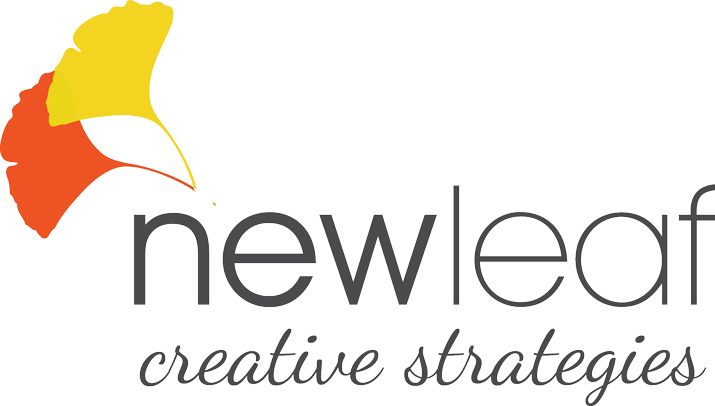Remember trying to figure out what the presents under the Christmas tree were when you were a child? One year, I got a bike for Christmas… and it’s pretty hard to hide that with wrapping paper!
Just like my bike, good business marketing is something really unique (your product and personality) wrapped with care and meaning (your personal brand when it’s well defined and authentic).
I’ve met entrepreneurs who exhausted their time and money trying to get their businesses off the ground—with almost no results.
The Internet is inundated with advice and step-by-step formulas that are supposed to make us rich. If these formulas worked easily for anyone, why are so few people self-made millionaires?
The ones who’ve figured it out all say the same thing: “I just needed to be myself!”
Lucky for you, authenticity is something everyone has. Paired with some business sense, authentic branding is the key to a successful and fulfilling values-based business.
Good marketing comes from thorough research, information, depth, and real value.
People are drawn to a message when it captures the feeling of who they want to be and what they want for themselves in life. Whether they know it or not, your audience’s real desires come from the core values they want to live by. Everyone believes that their set of values can end the problems of the world.
So, a great marketing strategy is so much bigger than the product or service you are offering.
1. Set up Values, a Vision and a Voice for your business
Decide what your core values are and what your want to stand for.
Some universal core values include wisdom, honesty, integrity, and community.
But, values are all great, so how do you choose the 5 or 6 values that are core to you and your values-based business?
Go for a walk or sit in solitude and think about the following questions:
What do I value about my friends?

If everyone was more/ had more ___________________, the world would be a better place.
What do I dislike most in other people? What is the opposite of that?
Why am I on the life path I am on? What values led me to make the decisions I have made?
When was I happiest in life? Why? What values led me to that happiness?
When was I least happy in life? Why? What values were missing during that period of my life?
2. Decide what you stand for: your Personal Brand
Now that you know your values, what do those look like in real life? Values are a theoretical tool. But, if you want them to change your life, think about how they affect your day-to-day actions and thoughts.
Think about what a perfect world would look like. How does everyone behave and think? What can you do that will bring the world a step closer to being a perfect place?
To establish the things you want to stand for, ask yourself:
What does my utopia look like? What steps can I take to bring about a world like that?
If I could do anything to contribute to society, what would it be and why?
The thing that makes me feel best (most positive, happiest, most serene) in life is _____________________.
What do my values look like in practice? What are two specific and widely applicable activities that are associated with each value?
Sometimes, people don’t share your values. Then, making systems with consequences helps people understand each other and work together.
For example, the legal system helped early rulers of large cities encourage trust even though their citizens all had very different values. With laws, we feel better that people will not steal from us and will act like we expect. Otherwise, we can take them to court.
So, let’s take a look at how you can influence your audience by using values in business.
3. Research your audience
Once you’ve decided who your audience is and what they value, put your assumptions to the test. People make millions of choices every week. The more knowledge you have about your audience, the better able you’ll be to make a difference in their lives.
What can you do to test your assumptions?
• Send out a survey to your current customers. Ask them what they want to achieve in a specific time frame and what they have already tried.
• Interview potential customers and their friends to find out what results they would expect and be looking for if they spent money on your service.
• Remember to get a good sense of the emotional needs that make people to look for your service and the emotions that have caused them to fail in the past. You need to know what is holding people back and what motivates them if you want make a positive impact.
• Experiment with your words and visual message to see what is most effective. Appeal to different emotions, fears, motivating factors, and personality types (rational, emotional, social, and free-spirited).
4. Set up a marketing plan that uses and showcases your unique values
Now, you’ve discovered the values you share with your clients. They would love to know that you have the same fundamental beliefs as them.
People don’t trust ‘hard sells’ and outbound marketing anymore. Advertising has changed. Consumers now look to see which companies are making a positive difference in the environment, the community, and in business.
That’s great because it gives you a chance to live your core values and share them with passionate supporters.
Decide how your values-based business will act and behave.
Research your collaborators, employees and communications. Does everything in your business run smoothly in line with your values? If not, what needs to change and how can you Lead from WIthin?
Is your business ethically, environmentally, socially, and financially sustainable? If not, what needs to change? If yes, what are the practices that make it sustainable and how can you let your audience know about them?
What do you want to change about the world? How can you build your business to become a force for good in the world?
Make your positive impact relevant to your business cycle. It’s the best way to make profits and stay focused. It will also make more sense to your audience and strengthen your brand message.
Ahead of time, plan:
• The size of the impact you want to make
• Your budget, financial resources, limitations, etc.
• The number of people you want to reach
• What the results of a successful campaign will look like: number of new customers, engaging with more businesses, number of new visitors to your site?
• What other resources you will need (employees, volunteers, venue, advertising, media) and how you plan to get them.
5. Engage, connect and make a difference
Use your values to position your brand as a positive influence in business. This will turn your company into a leader, a force for good, and a well-respected competitor or collaborator.
The best marketing strategy combines authentic passion and intelligence (which you get through research) into a powerful message that inspires people and brings them together.
Timberland “works its values” by fostering sustainability in all its practices. When the company uses rubber to make the soles of its shoes, 42% of it is recycled. Timberland also plants trees around the world in an initiative to preserve the outdoors—a key value of their outdoorsy image and consumers.
There is always room for improvement and there is always a more authentic way to connect. Grow your business from the essence of what you believe in. Other people will notice your passion and integrity—two very alluring qualities!
Have you noticed that hard marketing doesn’t work for you? Leave your comments below and tell us what your audience responds to best.
Check out our BRAND FROM WITHIN program to discover your personal brand and the difference you can make.


